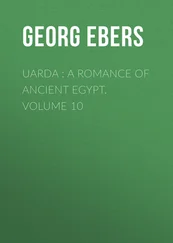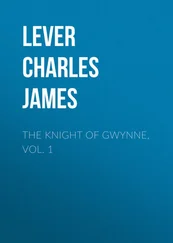Charles Bucke - Ruins of Ancient Cities (Vol. 2 of 2)
Здесь есть возможность читать онлайн «Charles Bucke - Ruins of Ancient Cities (Vol. 2 of 2)» — ознакомительный отрывок электронной книги совершенно бесплатно, а после прочтения отрывка купить полную версию. В некоторых случаях можно слушать аудио, скачать через торрент в формате fb2 и присутствует краткое содержание. Жанр: foreign_antique, foreign_prose, на английском языке. Описание произведения, (предисловие) а так же отзывы посетителей доступны на портале библиотеки ЛибКат.
- Название:Ruins of Ancient Cities (Vol. 2 of 2)
- Автор:
- Жанр:
- Год:неизвестен
- ISBN:нет данных
- Рейтинг книги:4 / 5. Голосов: 1
-
Избранное:Добавить в избранное
- Отзывы:
-
Ваша оценка:
- 80
- 1
- 2
- 3
- 4
- 5
Ruins of Ancient Cities (Vol. 2 of 2): краткое содержание, описание и аннотация
Предлагаем к чтению аннотацию, описание, краткое содержание или предисловие (зависит от того, что написал сам автор книги «Ruins of Ancient Cities (Vol. 2 of 2)»). Если вы не нашли необходимую информацию о книге — напишите в комментариях, мы постараемся отыскать её.
Ruins of Ancient Cities (Vol. 2 of 2) — читать онлайн ознакомительный отрывок
Ниже представлен текст книги, разбитый по страницам. Система сохранения места последней прочитанной страницы, позволяет с удобством читать онлайн бесплатно книгу «Ruins of Ancient Cities (Vol. 2 of 2)», без необходимости каждый раз заново искать на чём Вы остановились. Поставьте закладку, и сможете в любой момент перейти на страницу, на которой закончили чтение.
Интервал:
Закладка:
According to Arrian, Alexander burned the palace of the Persian king much against the will of Parmenio, who exhorted him to leave it untouched. To which Alexander answered, that he was resolved to revenge the ancient injuries, Greece had received from the Persians; who, when they marched into Greece, burned its temples , and committed many other barbarous devastations.
This, we think, is one reason why the building burned must have been a temple, and not a palace. The Persians had burned the temples of Greece, therefore Alexander burned the temple of the Persians. Besides, as the feast was held in the palace, it is not very likely that the master of the feast should have burned the place, in which he was not only then feasting, but in which he was to sleep on the very night of the conflagration; and that it was not destroyed is evident from the circumstance, recorded by Strabo and Arrian – that Alexander inhabited the royal palace at Persepolis after his return from India. Added to which, it is certain that there is, at this time, no appearance or marks of fire on any part of the ruins.
In respect to these ruins, it has been well observed, that magnificent columns, portals, and other architectural decorations, mark this spot as the site of a splendid “palace;” while the style of the sculptures and the inscriptions, many of them in the single-headed character, found only at this place, Nineveh, Babylon, Susa, and Ván, proves them to be of a very high antiquity. Mr. Kinneir, however, says they are generally admitted to be the remains of the “palace,” destroyed by Alexander; and the striking resemblance of the building, as it exists, to the account given of Persepolis by Diodorus, is, in his opinion, sufficient to remove any doubt, that may exist upon the subject. We confess that such is not our impression.
Those who regard the ruins as being the remains of a Persian temple, insist that the sculptured subjects, as well as the style of architecture, resemble, in many particulars, those of Egypt: among which may be mentioned the figures, divided by trees, the sphinxes, the vases and chains, the domes and architraves, the subterranean passages in the tombs, the sarcophagi and urns, and the well, twenty-five feet deep and fifteen square. The sculpture at Persepolis was also painted mostly in blue, a favourite colour in Egypt; but sometimes in black and in yellow. For these remarks we are indebted to Mr. Buckingham.
According to Arrian, it was the castle of Persepolis which Alexander burned. In Mr. Buckingham’s opinion, however, the ruins now seen correspond neither with those of a palace, nor of a castle; they were, therefore, according to him, not those of the edifice burned by Alexander at all; for on all these remains, as we have before stated, no mark of fire is to be traced, which could not be the case if this had been the principal agent used in its destruction.
The opinion, that these ruins are the remains of the palace, is not on the authority of all history, but on the assertion merely of Quintus, Curtius and Diodorus. The whole story as to the burning, is said to have been copied from a Greek writer, named Clitarchus 83 83 Kæmpfer, Hyde, Niebuhr, and St. Croix, regard the ruins as those of a palace: – Della Valle, Chardin, D’Hancarville, and others, as those of a temple. This is a question, however, which many writers regard as being impossible of solution, till an alphabet shall have been discovered of the arrow-headed inscriptions.
.
Though there are no remains of a city now at Persepolis, nor in any part of the plain in which it is situated; certain it is, that the city was not destroyed by Alexander; for it was a very important place for many centuries after.
Curtius, therefore, is guilty of an error in saying that the city was so far from being rebuilt, that unless the river Araxes ran near it, there are no signs to guess where it stood; for neither Arrian nor Strabo, nor even Diodorus, whom Curtius commonly copies, acquaint us with any thing but the burning of the palace.
The first book of Maccabees says that there was a rich temple at Persepolis; and, the second, that Antiochus Epiphanes determined to pillage it. Alexander, therefore, could not have destroyed it; for it is highly improbable, from the history of those times, that so laboured and magnificent a work should have been rebuilt and restored in the short period between Alexander and the Syrian king; viz. – 160 years. That prince formed the design of pillaging both “a temple,” and the city.
Though Persepolis long survived the palace of Jemsheed, its inhabitants are said to have regarded with unextinguishable hatred the people by whom they were conquered; and, as if inspired by those fragments of former glory, with which they were surrounded, they maintained a character for pride and courage, that was not entirely subdued, till several centuries after the Arabians first overran Persia.
Its subsequent history has been summed up by Mr. Fraser. “It was among the earliest conquests of Ardeshir Babegan; Shepoor II. made it his residence; Yesdigird I. held his court there; and Hoormuz II., who reigned at the close of the sixth century, passed two months every year in it. In the succeeding age, however, it ceased to be a royal residence; for Khoosroo Purveez bestowed the government on one of his favourites; and it was here that the last of the Sassanian kings lay concealed, when called to the throne, A. D. 632. Twelve years afterwards, it capitulated to the Mohammedans; but the people, having slain their foreign governor, were all put to the sword. The city was ultimately destroyed by Sumcaneah-u-Dowlan, and the fanatical Arabs, A. D. 982. Such,” concludes Mr. Fraser, “is the sketch of the latter days of Istakhar 84 84 At the distance of about five miles is a conspicuous hill, on the top of which, and visible to the eye from Persepolis, are the remains of a fortress. This hill is now called Istakhar, and is quite distinct from Persepolis. Of this hill Le Brun has given a drawing; and the original must strike every traveller the moment he enters the palace of Merdusht; as it has all the appearance of having been much fashioned by the hand of man. – Morier.
, (the only name by which the city is recognised by the native Persian historians); but the question, who was its founder? and who raised the mighty fabrics, of which the ruins still astonish the traveller? yet remain unanswered.”
The authors who have described these ruins are, Garcias de Silva Figueroa, Pietra de la Valle, Sir John Chardin, Le Brun, Francklin, Niebuhr, Morier, Buckingham, Porter, Ouseley, and Fraser.
It has been truly said, that we cannot proceed a step in Persia, without encountering some monument of the cruelty of conquerors and of human vicissitudes. These ruins have been variously described; insomuch that, had travellers not agreed in respect to the latitude and longitude, one would be tempted to suspect, that they had visited different ruins. Our account will therefore be desultory: for to give a full and regular one would, without drawings, be of little available use.
“It is very difficult to give any detailed account of the ruins of this celebrated place,” says Mr. Buckingham. “There is no temple, as at Thebes, at Palmyra, or at Balbec, sufficiently predominant over all other surrounding objects to attract the chief attention, and furnish of itself sufficient matter for description and observation. Here, all is broken and detached fragments, extremely numerous, and each worthy of attention; but so scattered and disjointed, as to give no perfect idea of the whole. Its principal feature is, that it presents an assemblage of tall, slender, and isolated pillars, and separate door-ways and sanctuaries, spread over a large platform, elevated, like a fortification, from the level of the surrounding plain.”
Читать дальшеИнтервал:
Закладка:
Похожие книги на «Ruins of Ancient Cities (Vol. 2 of 2)»
Представляем Вашему вниманию похожие книги на «Ruins of Ancient Cities (Vol. 2 of 2)» списком для выбора. Мы отобрали схожую по названию и смыслу литературу в надежде предоставить читателям больше вариантов отыскать новые, интересные, ещё непрочитанные произведения.
Обсуждение, отзывы о книге «Ruins of Ancient Cities (Vol. 2 of 2)» и просто собственные мнения читателей. Оставьте ваши комментарии, напишите, что Вы думаете о произведении, его смысле или главных героях. Укажите что конкретно понравилось, а что нет, и почему Вы так считаете.












